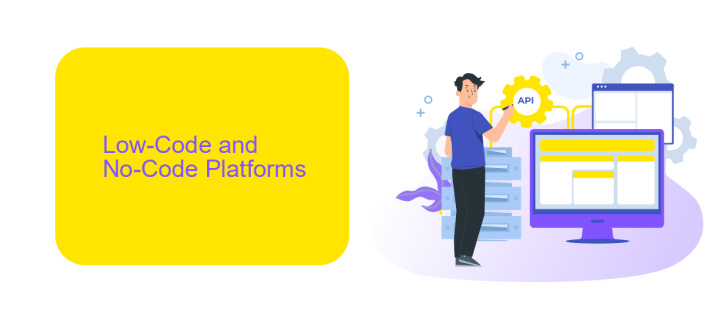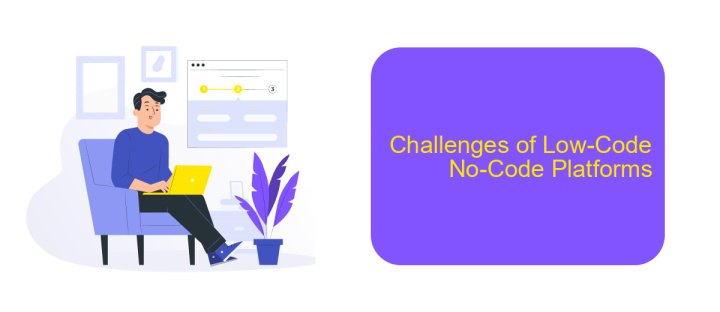Low-Code No-Code Platform
Low-Code No-Code (LCNC) platforms are revolutionizing the way businesses develop applications by enabling users to create software with minimal or no coding knowledge. These platforms empower a broader range of individuals, from professional developers to business analysts, to build and deploy applications quickly and efficiently, significantly reducing development time and costs while fostering innovation and agility.
Introduction
Low-Code No-Code Platforms are revolutionizing the way businesses and individuals approach software development. These platforms enable users to create applications with minimal coding knowledge, making technology more accessible to a broader audience.
- Ease of use: Drag-and-drop interfaces simplify the development process.
- Speed: Rapid prototyping and deployment reduce time to market.
- Cost-effective: Lower development costs compared to traditional coding.
- Integration: Seamlessly connect with other services and APIs, such as ApiX-Drive.
By leveraging Low-Code No-Code Platforms, organizations can quickly adapt to changing business needs and foster innovation. Tools like ApiX-Drive help streamline integrations, allowing users to connect various applications without extensive technical expertise. This democratization of software development empowers more people to bring their ideas to life, ultimately driving digital transformation across industries.
Low-Code and No-Code Platforms

Low-code and no-code platforms are revolutionizing the way businesses develop applications by significantly reducing the need for extensive coding knowledge. These platforms provide visual development environments where users can drag and drop components, automate workflows, and quickly prototype applications. This democratization of software development enables non-technical users to create functional applications, thereby accelerating digital transformation and reducing the dependency on IT departments.
One of the key advantages of these platforms is their ability to integrate with various services and systems effortlessly. For instance, ApiX-Drive is a service that facilitates seamless integration by allowing users to connect different applications without writing a single line of code. This capability not only enhances productivity but also ensures that businesses can swiftly adapt to changing market demands. By leveraging low-code and no-code platforms, organizations can innovate faster, reduce development costs, and improve operational efficiency.
Benefits of Low-Code No-Code Platforms

Low-Code No-Code platforms are revolutionizing the way businesses develop applications by significantly reducing the need for extensive coding knowledge. These platforms empower a broader range of individuals, including those without technical expertise, to create functional and sophisticated applications.
- Speed and Efficiency: Development times are drastically reduced, allowing for quicker deployment of applications.
- Cost-Effectiveness: Lower development costs as fewer specialized developers are needed.
- Flexibility: Easy to make changes and updates without extensive re-coding.
- Accessibility: Enables non-developers to participate in the application development process.
- Integration: Seamlessly integrates with other tools and services, such as ApiX-Drive, to streamline workflows and data management.
By leveraging these platforms, businesses can innovate faster and more efficiently. The ability to integrate with services like ApiX-Drive further enhances their functionality, allowing for seamless data flow between various applications. This democratization of app development can lead to increased productivity and innovation across the organization.
Challenges of Low-Code No-Code Platforms

Despite their growing popularity, Low-Code No-Code platforms come with their own set of challenges. One significant issue is the limited customization options, which can restrict the flexibility needed for complex projects. Users might find themselves constrained by the predefined templates and components, leading to potential inefficiencies.
Another challenge is the dependency on the platform's ecosystem. When businesses rely heavily on a single vendor, they risk facing compatibility issues or even vendor lock-in. This can make it difficult to migrate to another system or integrate with other tools, potentially stifling innovation and growth.
- Limited scalability for large-scale applications
- Security concerns due to shared infrastructure
- Potential performance bottlenecks
- Insufficient support for complex integrations
To address integration challenges, services like ApiX-Drive can be invaluable. ApiX-Drive facilitates seamless connections between various applications, enabling data to flow effortlessly across platforms. This can significantly enhance the functionality and interoperability of Low-Code No-Code solutions, making them more viable for diverse business needs.
- Automate the work of an online store or landing
- Empower through integration
- Don't spend money on programmers and integrators
- Save time by automating routine tasks
Conclusion
The emergence of Low-Code No-Code platforms has revolutionized the way businesses approach software development, making it accessible to a broader audience. These platforms empower non-technical users to create and deploy applications quickly, reducing the dependency on traditional coding expertise. This democratization of app development not only accelerates innovation but also significantly cuts down on time and costs associated with software projects.
Moreover, the integration capabilities of Low-Code No-Code platforms have been enhanced with services like ApiX-Drive, which streamline the process of connecting various applications and systems. By simplifying these integrations, businesses can ensure seamless data flow and operational efficiency without the need for extensive coding. As these platforms continue to evolve, they are poised to play a crucial role in the digital transformation journey of organizations across industries, fostering a more agile and responsive business environment.
FAQ
What is a Low-Code No-Code Platform?
Who can benefit from using Low-Code No-Code Platforms?
Can Low-Code No-Code Platforms handle complex integrations?
Are there any limitations to using Low-Code No-Code Platforms?
How can businesses automate workflows using Low-Code No-Code Platforms?
Time is the most valuable resource for business today. Almost half of it is wasted on routine tasks. Your employees are constantly forced to perform monotonous tasks that are difficult to classify as important and specialized. You can leave everything as it is by hiring additional employees, or you can automate most of the business processes using the ApiX-Drive online connector to get rid of unnecessary time and money expenses once and for all. The choice is yours!


